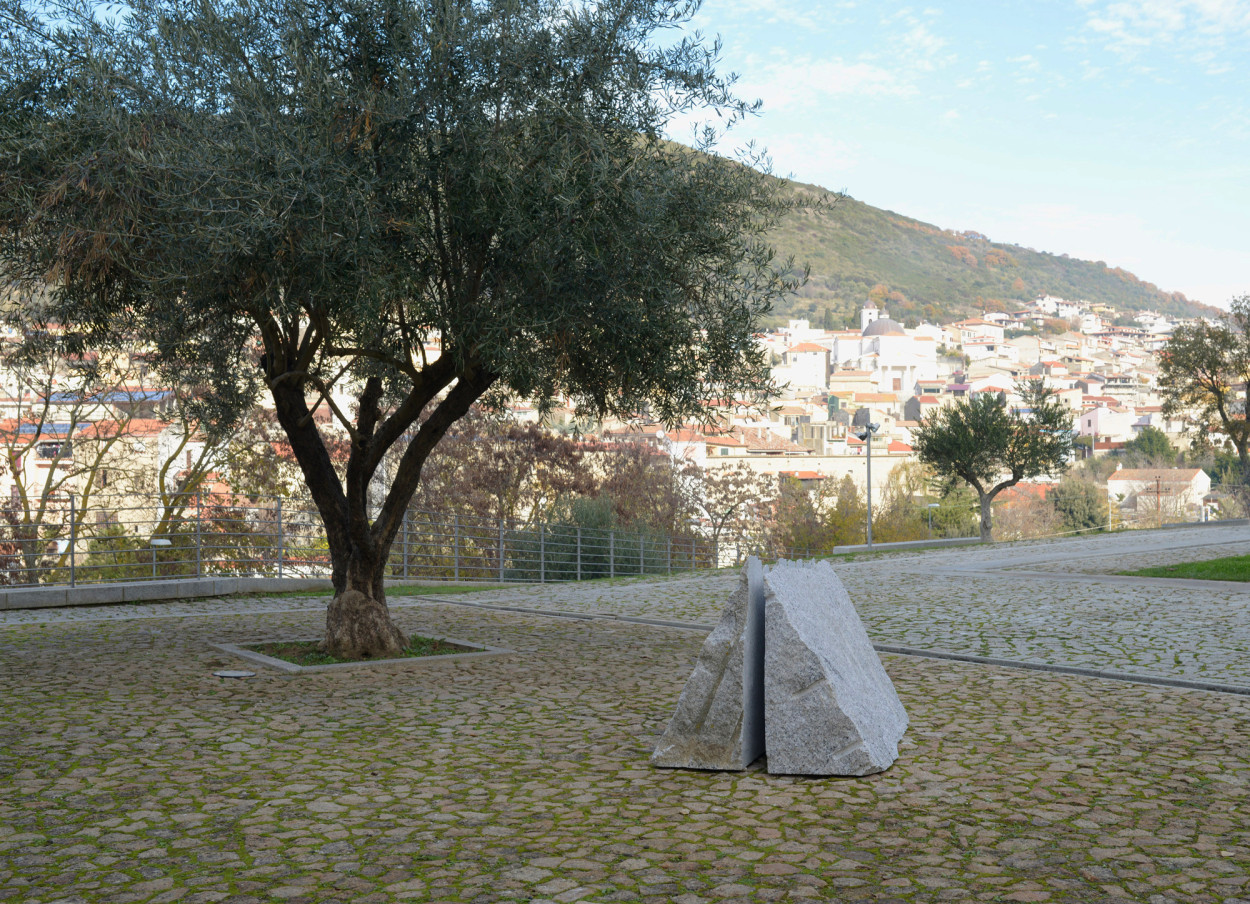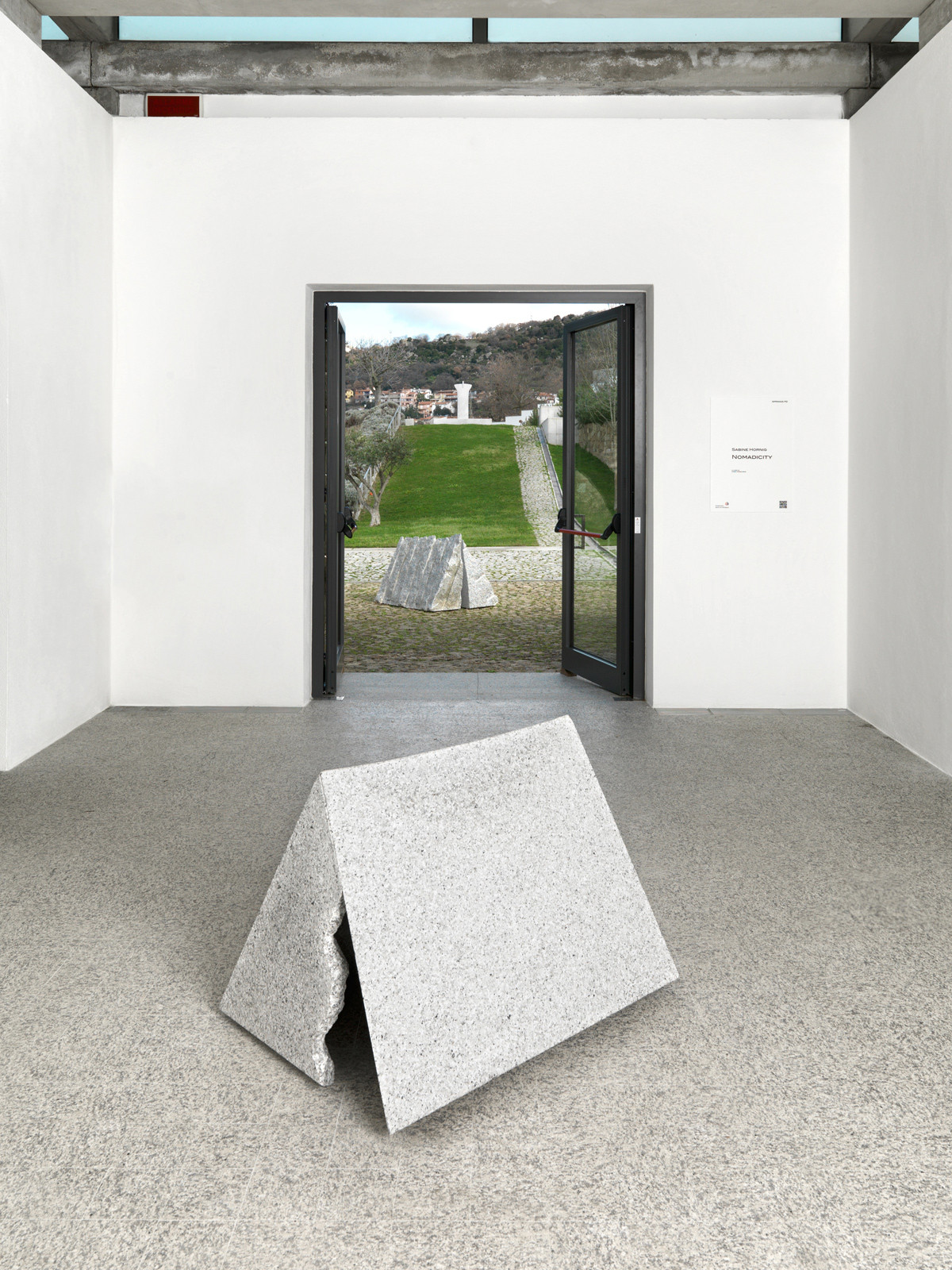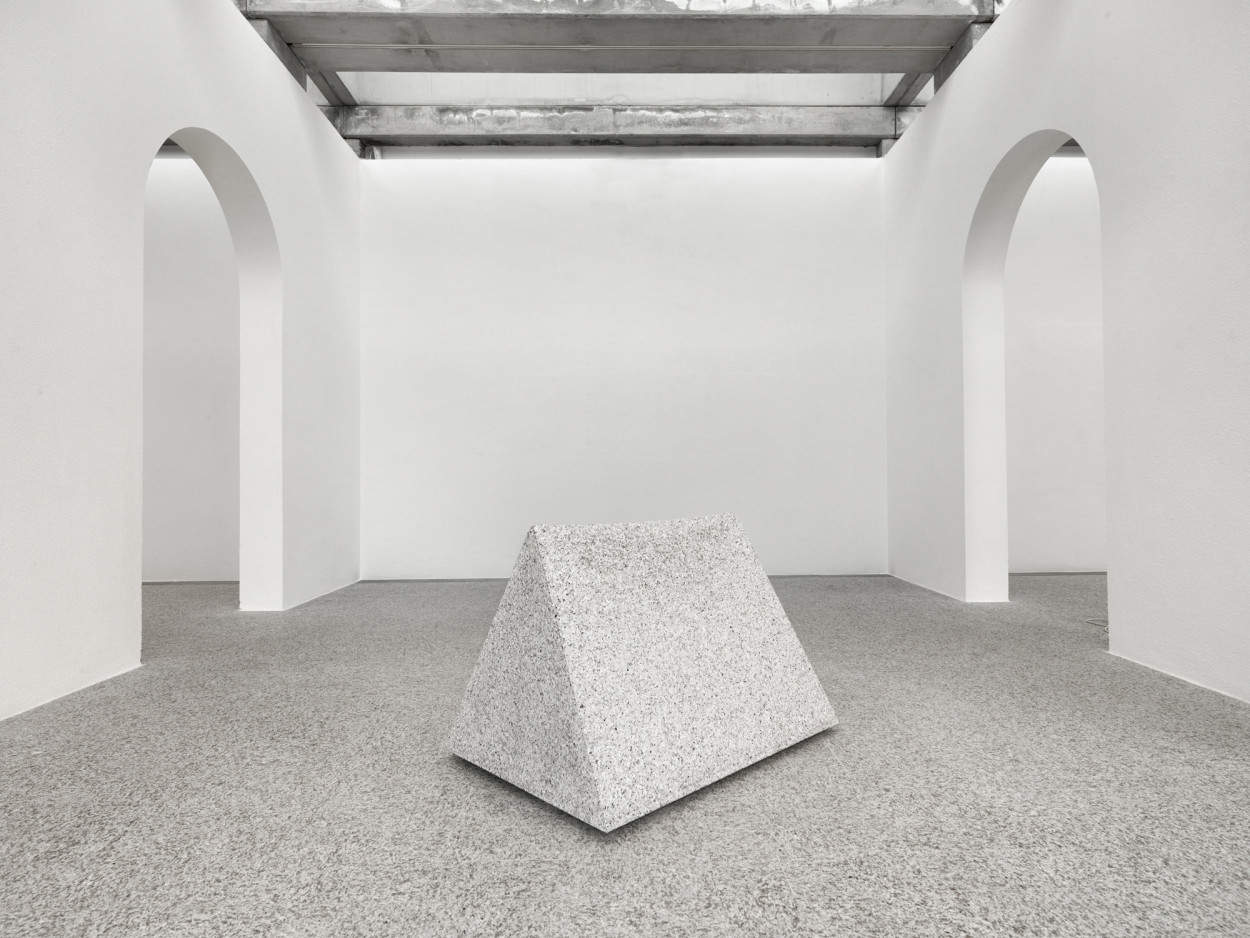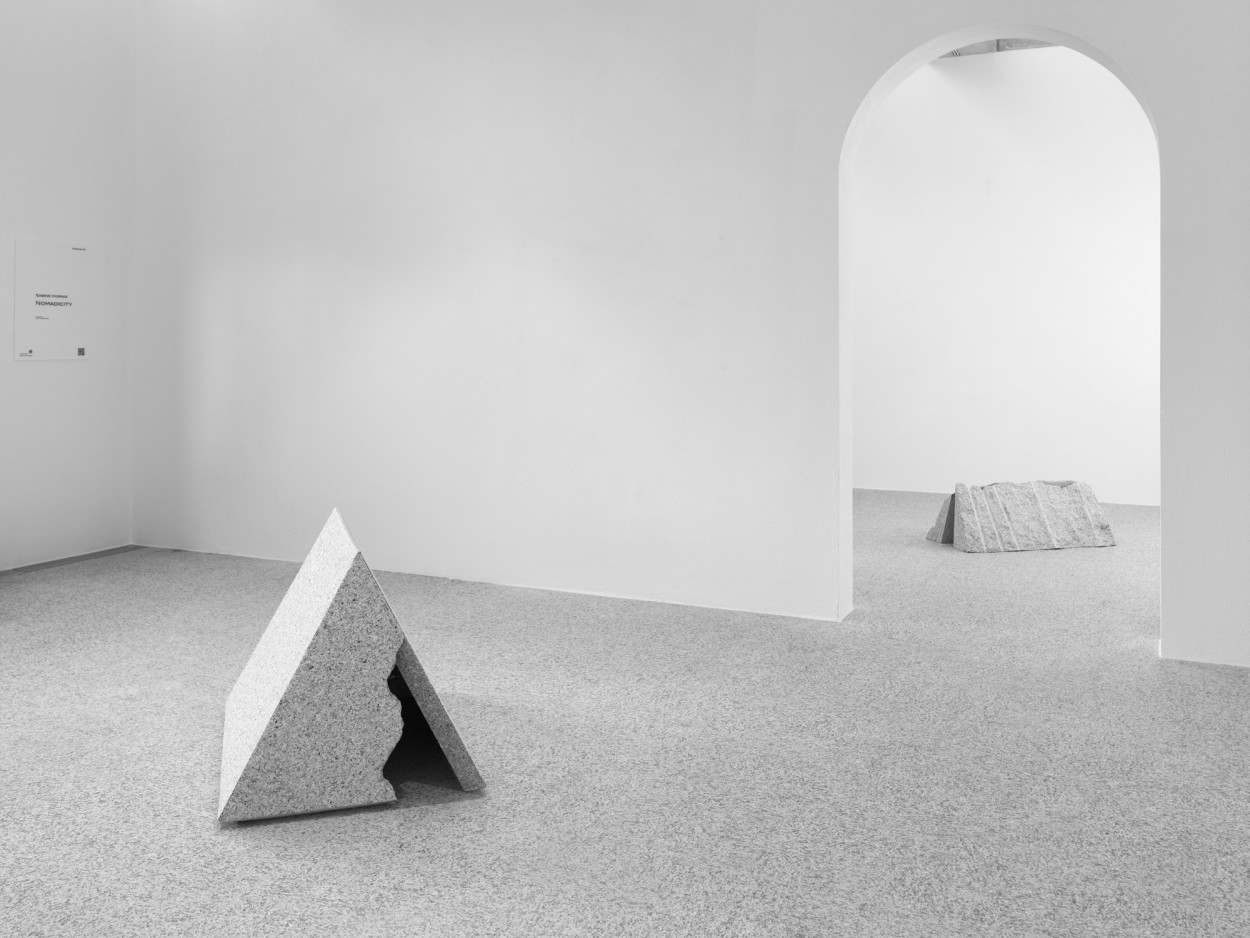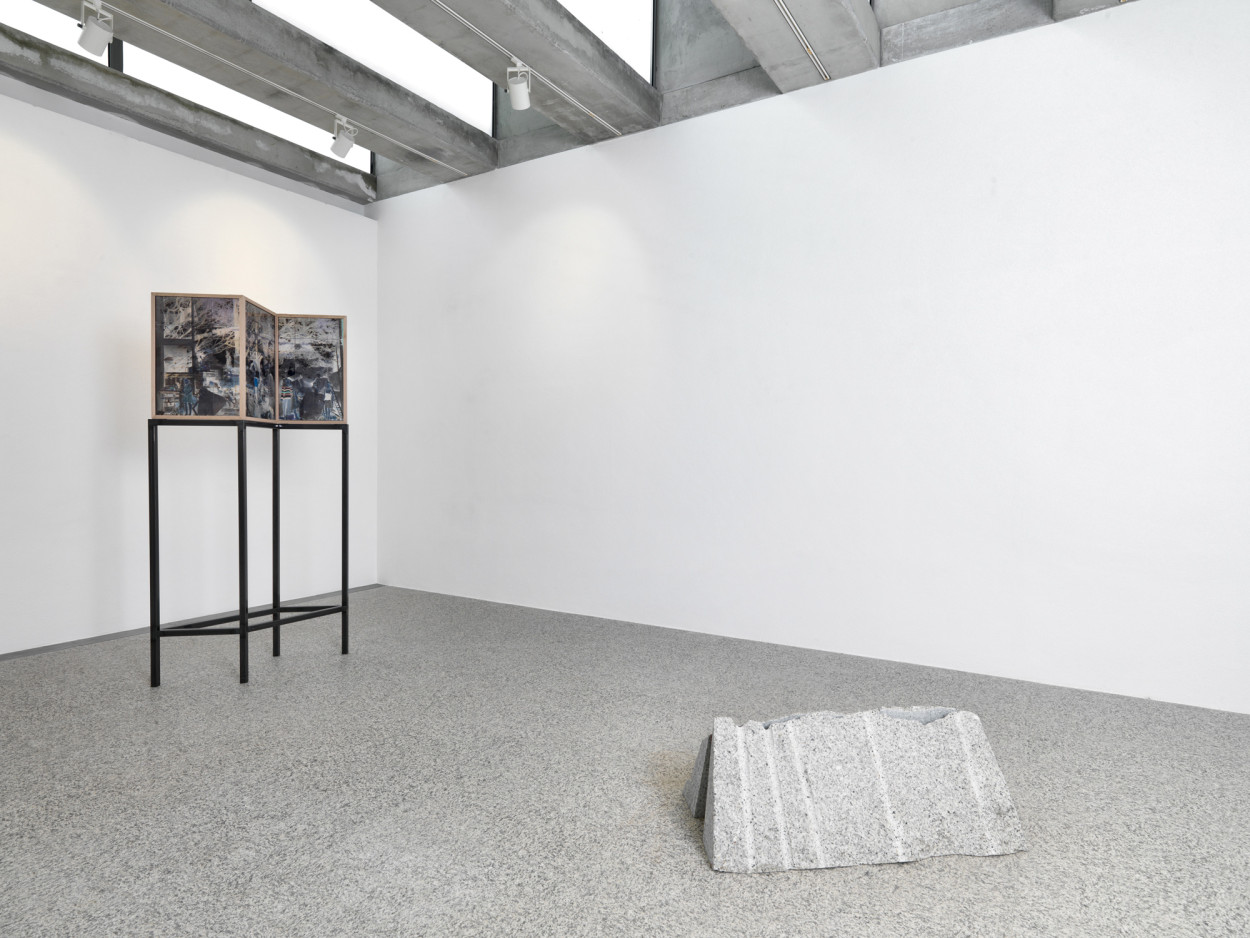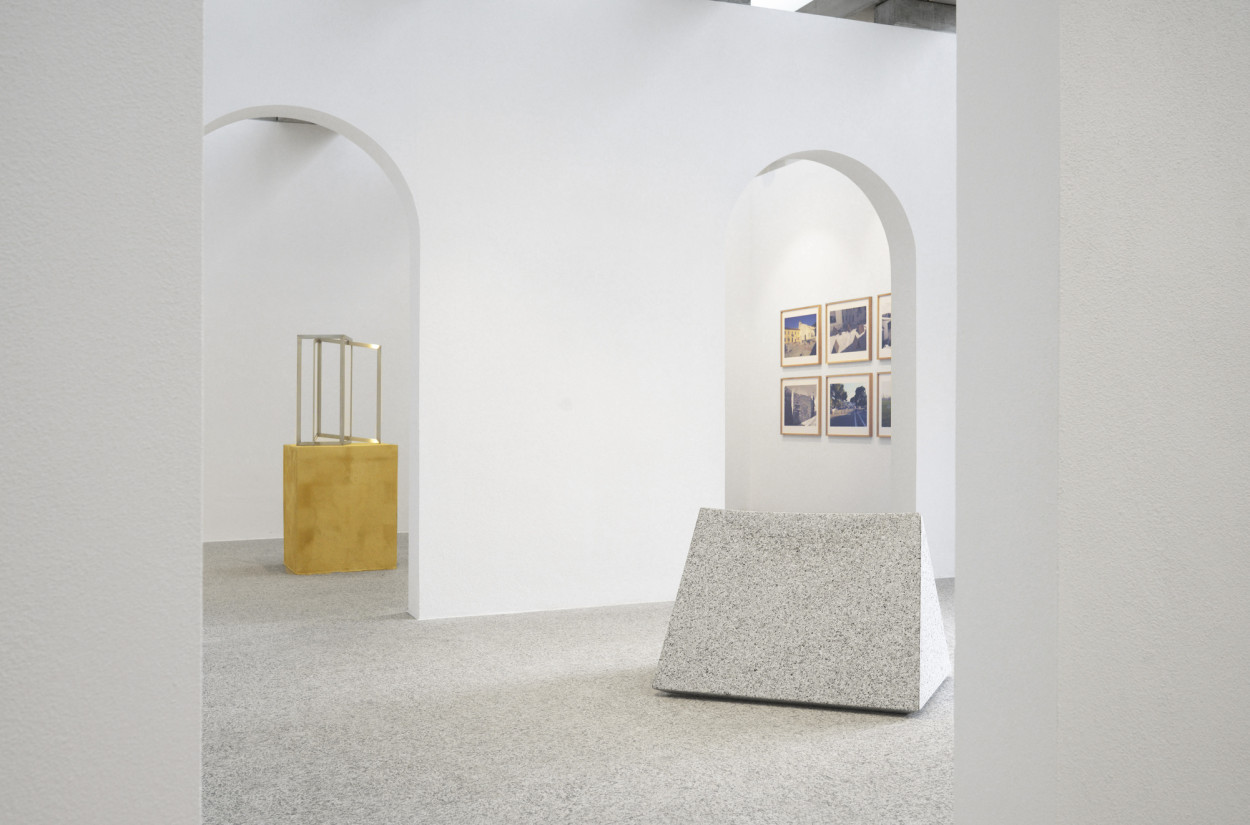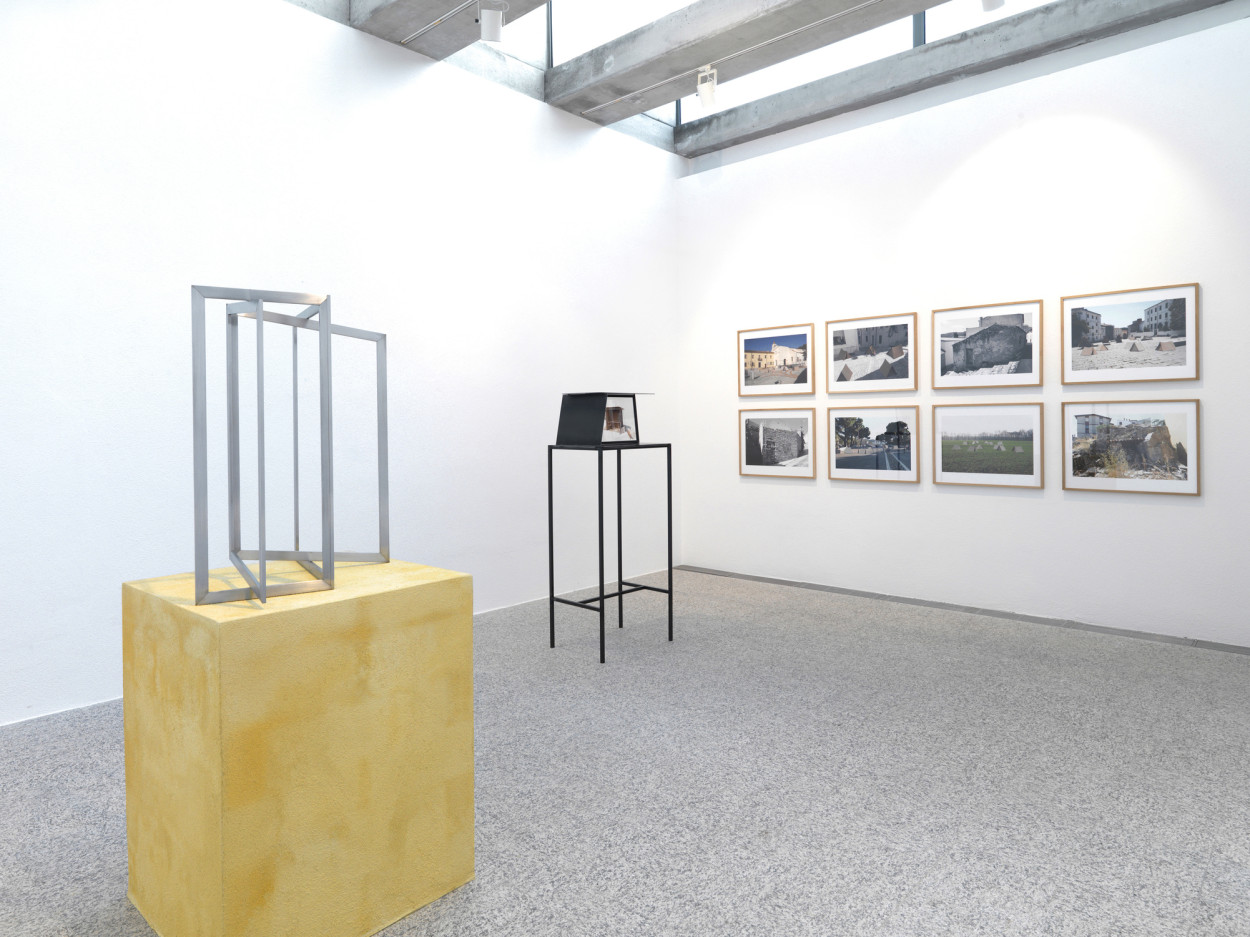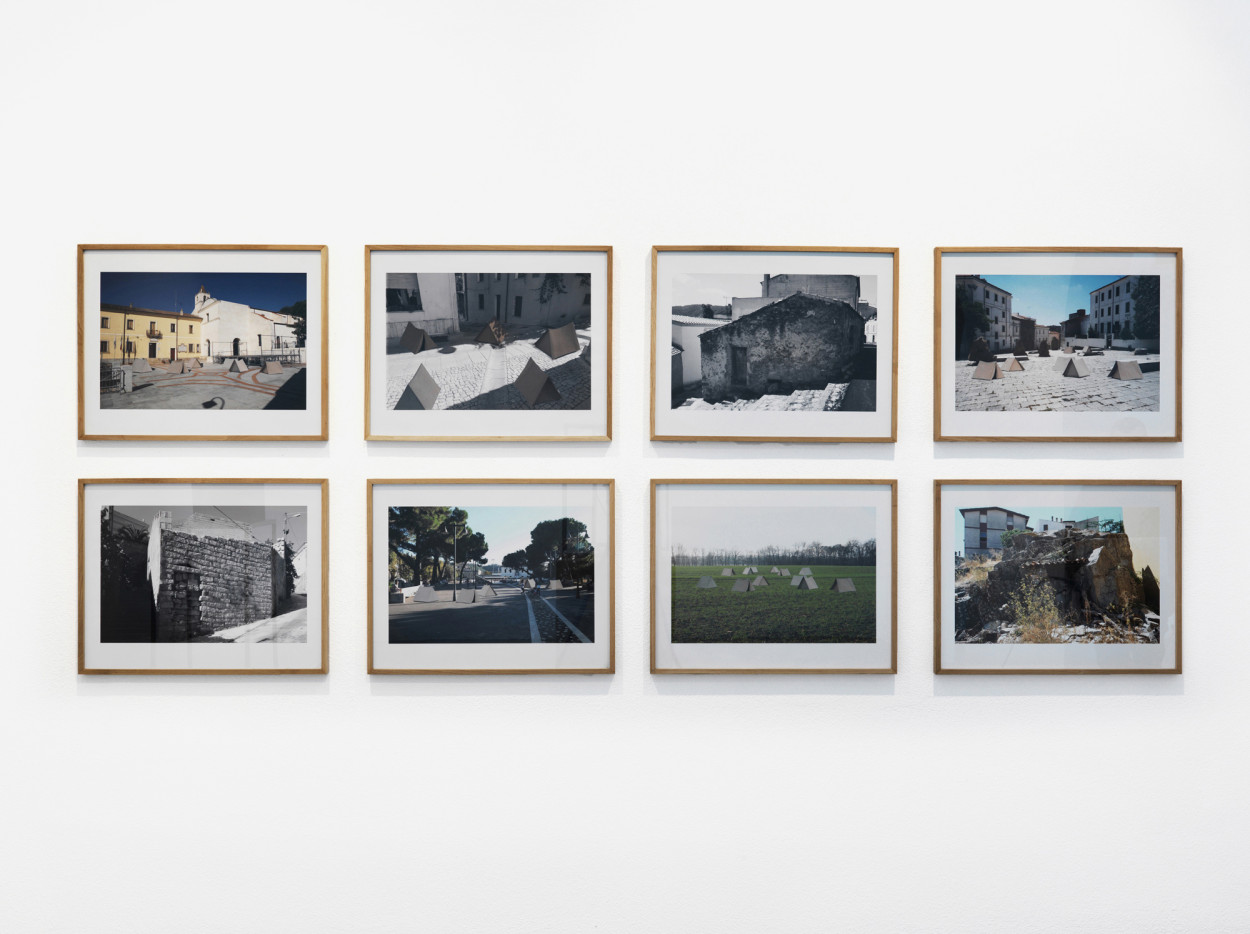NOMADICITY, 2015
Museo Nivola, Orani, Italy
Solo Show
2015
NOMADICITY
Sculpture and Model: Sabine Hornig
Exhibition: Museo Nivola, Orani, Italy, 2015/16
Curated by Mark Gisbourne
The sculptural works of Sabine Hornig realised and inspired by her residency at the Nivola Museum, Orani, provide a perfect synthesis of many of the aims aspired to by the Italian-American master from Orani. Added to this they provide a unique specificity of place since the tent works have been realised in the local granite stone of the region.
The reference to architecture, as well as the megalithic, were always of a central aesthetic concern to Nivola, and a sense of the archaic and prehistoric was certainly an omnipresent aspect in his work. In this respect Sabine Hornig the sculptor and Senior Resident at the Foundation in 2015, has taken this very much to heart. And like Nivola the sculptress has also work on public art and places of immediate public access.
The sculpture of Sabine Hornig has almost invariably engaged with different aspects of the interface between sculpture and architecture, and has done so in terms of its having a sense of opacity (as form) and transparency (as space). Her decidedly post-minimal approach to sculpture as it relates to architecture valorises the power of uniquely conceived structures to transform perception as to the given status and application of materials used.
In this instance her granite tents are sculptural works that point to those forms of architecture outside the immediate circle of the international modernist canon, such abodes as huts, sheds and transitional dwellings.
These granite structures take on a particular relevance in Sardinia not least, perhaps, because of the pre-historic megalithic Nuraghe precursors on the island, but more so, and particularly today, when shifting populations and renewed forms of nomadicity are being increasingly witnessed across Europe and particularly in modern Italy. In today’s world we find refugee camps filled with these referential and purportedly temporary structures, and we have been reminded yet again (through some distress) that human development emerged from within an early hunter-gather nomadic and migrant history.
The tents are installed inside the exhibition space and outside in the park. Included inside the exhibition are a series of models, again something very much in line with the traditional use of preliminary modelli as executed by Nivola. Yet there is a marked distinction between the two sculptors, insomuch as Hornig instigates the idea that transparency (a seeing through) is its own sort of absent presence. In this respect while Nivola was an artist emblematic of the formalities and ethnicities of modernism, the works of Hornig reflect something of the disequilibrium (at times uncanny) and dislocation that has entered our post-structuralist (sometime called post-modernist) world.
Mark Gisbourne
